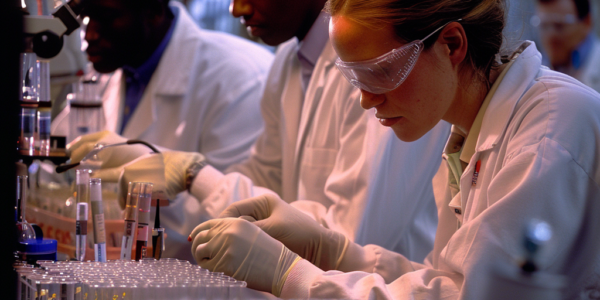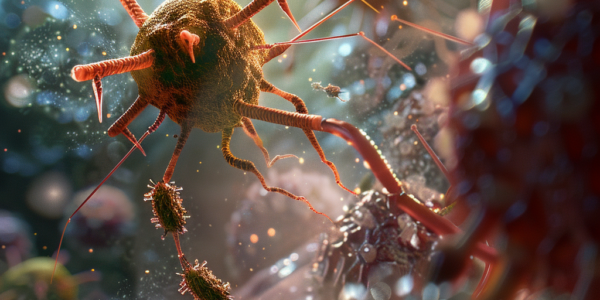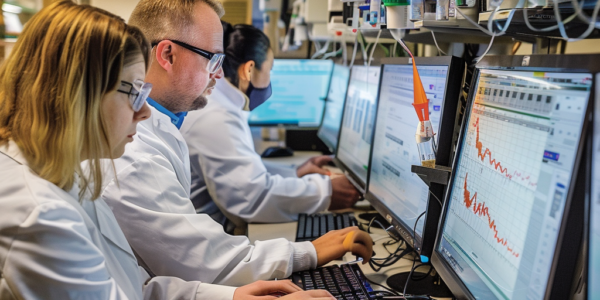Study Reveals Brain’s Regulation of Emotions
Researchers at Dartmouth have uncovered the intricate mechanisms behind how the brain regulates emotions, offering new insight into mental health treatments. The study shows the role of specific brain regions in emotion regulation and the influence of neurotransmitters like dopamine, serotonin, and cannabin.
Israeli Researchers Make Breakthrough in Treatment of Bone Metastasis in Breast Cancer Patients
Israeli researchers at Tel Aviv University have developed a new therapeutic strategy using existing medications to inhibit the spread of breast cancer to the bone, offering hope for improved treatment strategies and potentially impacting other types of cancer as well. The groundbreaking study utilized animal models and tissue samples from patients to demonstrate the efficacy of the new approach, providing new insights into combating the spread of cancer to the bone.
Groundbreaking Discovery in Neuroscience Reveals Unique Development of Brain Blood Vessels
Researchers have made a groundbreaking discovery in neuroscience, uncovering a specific enzyme crucial for the invasion of blood vessels into the brain. This finding challenges long-held beliefs about vascular formation and has significant implications for the treatment of neurological diseases. The study, led by Prof. Benoit Vanhollebeke, highlights the functional alignment between the birth of brain vessels and their specific properties, particularly the blood-brain barrier. This breakthrough not only enhances our understanding of the cardiovascular system but also opens new pathways for developing targeted treatments for neurological diseases.
Attack and defence in the microverse
Research team at University of Jena examines the interaction of attack and defence strategies when cholera-causing bacteria are infected with a bacteriophage. Tiny RNA molecules play a decisive role in the complex interaction. The findings have been published in Cell Host & Microbe.
UMass Amherst Researchers Use AI to Eavesdrop on Insects for Environmental Health Assessment
UMass Amherst researchers are leveraging machine learning to eavesdrop on the insect world, aiming to enhance environmental health assessment. By identifying different insect species through their sounds, researchers hope to gain insights into the shifting populations of insects, which can provide valuable information about the overall health of the environment. The study, recently published in the Journal of Applied Ecology, highlights the increasing significance of machine and deep learning in automated bioacoustics modeling. Laura Figueroa, assistant professor of environmental conservation at UMass Amherst and the senior author of the paper, emphasizes the crucial role of insects in ecosystems and the challenges in monitoring their populations. With the rise of environmental stressors and drastic changes in insect populations, traditional sampling methods are proving to be insufficient. The collaboration between ecologists and machine-learning experts is seen as a promising approach to fully unlock the potential of AI in identifying and monitoring insect populations. The potential of AI in environmental health assessment is evident, offering a non-invasive and efficient alternative to traditional entomological methods. As Figueroa points out, the ability to differentiate insect sounds and train AI models to identify species based on their unique sounds opens up new possibilities for understanding and safeguarding insect populations in the face of environmental challenges.
Obesity Study in UK, Women’s Tennis in Saudi Arabia, and Peace Initiative Between Switzerland and Russia
Study in the UK identifies genetic variants in two specific genes that may contribute to obesity risk factors. Women’s Tennis Association announces record prize money for WTA Finals in Saudi Arabia, sparking mixed reactions.
JAX Researchers Develop Platform to Study Genetic Diversity in Mutation Outcomes
JAX researchers at The Jackson Laboratory have developed a powerful platform using stem cells from eight different mouse strains to mimic genetic diversity, providing new opportunities for uncovering targets for therapeutic interventions. The platform allows for investigating the effects of background genetics on the DYRK1A gene, associated with autism, microcephaly, and intellectual disability in humans. This work has significant implications for understanding the role of genetic diversity in human health conditions and for identifying potential targets for therapeutic intervention.
Study Reveals Surprising Findings on Virus Host Transmission
A recent study has revealed surprising findings on virus host transmission, suggesting that anthroponotic transmission may be more common than previously thought. The study, conducted by scientists from the UK, analyzed nearly 60,000 viral genomes and highlighted the prevalence of viruses transmitted from humans to animals. The research underscores the bidirectional nature of virus host dynamics and emphasizes the importance of comprehensive surveillance and research efforts in understanding and mitigating the risks posed by emerging infectious diseases.
Global Crisis: The Silent Killer of Air Pollution
Air pollution is a global crisis causing over seven million deaths annually, surpassing AIDS and malaria combined. Only seven countries meet air quality standards, leaving 99% of the population vulnerable. Disparities exist between affluent and underprivileged, with the poorest and marginalized individuals disproportionately affected. Prolonged exposure to air pollution can lead to severe health issues and premature death, with the most vulnerable demographics being the very young and the elderly. Urgent global action is needed to mitigate its devastating impact.
Organoids reveal link between traumatic brain injury and increased risk of dementia and ALS
A USC Stem Cell study reveals the link between traumatic brain injury and the increased risk of dementia and ALS. The study utilized lab-grown human brain structures known as organoids to explore potential strategies for mitigating these risks, identifying a gene called KCNJ2 as a potential target for intervention. This offers promising prospects for the development of post-injury treatments and preventive measures for individuals at risk of TBI.










